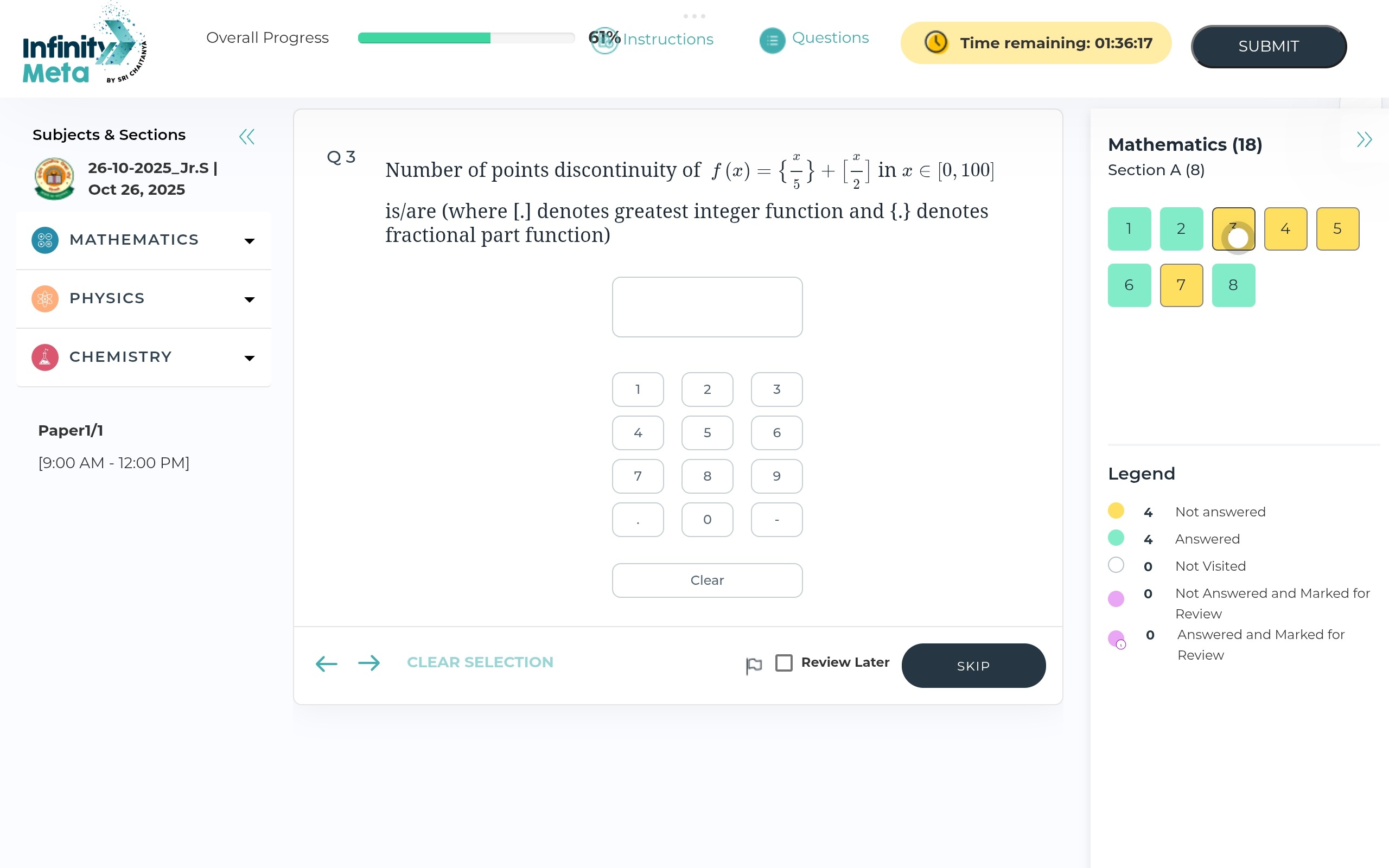Question
Question: Number of points discontinuity of \( f(x) = \{\frac{x}{5}\} + [\frac{x}{2}] \) in \( x \in [0,100] \...
Number of points discontinuity of f(x)={5x}+[2x] in x∈[0,100] is/are (where [.] denotes greatest integer function and {.} denotes fractional part function)

49
50
51
61
50
Solution
The function is f(x)={5x}+[2x].
The fractional part function {5x} is discontinuous when 5x is an integer, i.e., x=5k for k∈Z. In [0,100], these points are {0,5,10,…,100}, which are 21 points.
The greatest integer function [2x] is discontinuous when 2x is an integer, i.e., x=2m for m∈Z. In [0,100], these points are {0,2,4,…,100}, which are 51 points.
The potential points of discontinuity for f(x) are the union of these two sets: D={x∈[0,100]∣5x∈Z}∪{x∈[0,100]∣2x∈Z}.
Let's analyze the continuity at points x=5k for k∈{1,2,…,19}. If k is odd (k=2j+1), x=10j+5. f(10j+5)={2j+1}+[210j+5]=0+[5j+2.5]=5j+2. limx→(10j+5)−f(x)=limx→(10j+5)−{5x}+limx→(10j+5)−[2x]=1+[210j+5−ϵ]=1+[5j+2.5−ϵ]=1+5j+2=5j+3. Since f(10j+5)=limx→(10j+5)−f(x), these 10 points (5,15,…,95) are discontinuities.
If k is even (k=2j), x=10j. f(10j)={2j}+[210j]=0+5j=5j. limx→(10j)−f(x)=1+[210j−ϵ]=1+[5j−ϵ]=1+5j−1=5j. limx→(10j)+f(x)=0+[210j+ϵ]=0+[5j+ϵ]=5j. These 10 points (10,20,…,100) are points of continuity.
Now consider points x=2m where x is not a multiple of 5. These are even numbers not ending in 0. For x=2m, where m is not a multiple of 5: f(2m)={52m}+[22m]={52m}+m. limx→(2m)−f(x)=limx→(2m)−{5x}+limx→(2m)−[2x]={52m}+[m−ϵ]={52m}+m−1. Since f(2m)=limx→(2m)−f(x), these points are discontinuities. The even numbers in (0,100) are 2,4,…,98 (49 points). The multiples of 10 in (0,100) are 10,20,…,90 (9 points). The number of even numbers not divisible by 5 is 49−9=40. These are discontinuities.
The endpoints x=0 and x=100 are points of continuity.
Total number of discontinuities = (discontinuities at x=10j+5) + (discontinuities at x=2m not divisible by 5) Total = 10+40=50.
